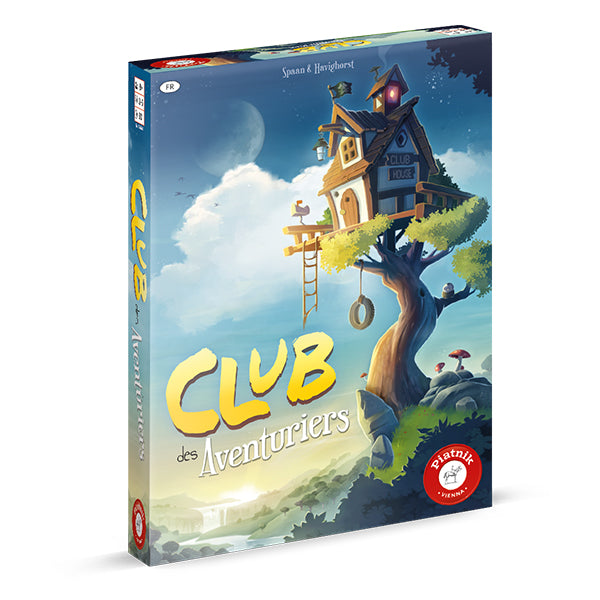Description
Have you ever fought a great white shark with an iron and lipstick? Or broken into a house with a disco ball and bubble gum? Together, players experience hair-raising adventures and must get out of a tight spot with crazy ideas. All adventures and puzzles can be replayed endlessly.
Sometimes all it takes is a little imagination to experience exciting adventures.
However, a few more or less everyday objects that you can use to get out of a tight spot are also useful. The authors Mathias Spaan and Henrik Havighorst used these simple ingredients to create the cooperative matching game "The Adventure Club," in which two to five people aged eight and over solve tasks with a lot of imagination, unusual methods, and a pinch of madness.
The "Book of Adventures," which contains twelve exciting stories, each divided into five chapters, provides the framework for the exciting experiences. Each of these chapters ends with a task to be completed immediately. How do you stop a speeding locomotive or climb a lighthouse? How do you build a buoyancy aid or defuse a bomb?
When it's your turn to solve the task, you must secretly choose two object cards that are most suitable for the task and three objects that have the worst chances of success. The situation becomes especially tricky when the decision has to be made under time pressure, as some objects only make sense in combination. After all, who knows right away how to stay away from a shark? Are lipstick and toilet paper useful, or perhaps salami and a fishing rod?
Due to the game's cooperative orientation, the other members of the "Adventure Club" decide together which two cards they believe are suitable for solving the task. If the result matches, a rung on the adventure ladder can be climbed, and the next chapter with a new challenge awaits. Unlike many other games, there are no predefined solutions in "Adventure Club." Luck determines the available items, which is why each adventure can be experienced multiple times.
Sometimes all it takes is a little imagination to experience exciting adventures.
However, a few more or less everyday objects that you can use to get out of a tight spot are also useful. The authors Mathias Spaan and Henrik Havighorst used these simple ingredients to create the cooperative matching game "The Adventure Club," in which two to five people aged eight and over solve tasks with a lot of imagination, unusual methods, and a pinch of madness.
The "Book of Adventures," which contains twelve exciting stories, each divided into five chapters, provides the framework for the exciting experiences. Each of these chapters ends with a task to be completed immediately. How do you stop a speeding locomotive or climb a lighthouse? How do you build a buoyancy aid or defuse a bomb?
When it's your turn to solve the task, you must secretly choose two object cards that are most suitable for the task and three objects that have the worst chances of success. The situation becomes especially tricky when the decision has to be made under time pressure, as some objects only make sense in combination. After all, who knows right away how to stay away from a shark? Are lipstick and toilet paper useful, or perhaps salami and a fishing rod?
Due to the game's cooperative orientation, the other members of the "Adventure Club" decide together which two cards they believe are suitable for solving the task. If the result matches, a rung on the adventure ladder can be climbed, and the next chapter with a new challenge awaits. Unlike many other games, there are no predefined solutions in "Adventure Club." Luck determines the available items, which is why each adventure can be experienced multiple times.

